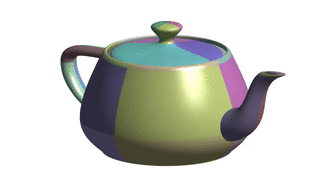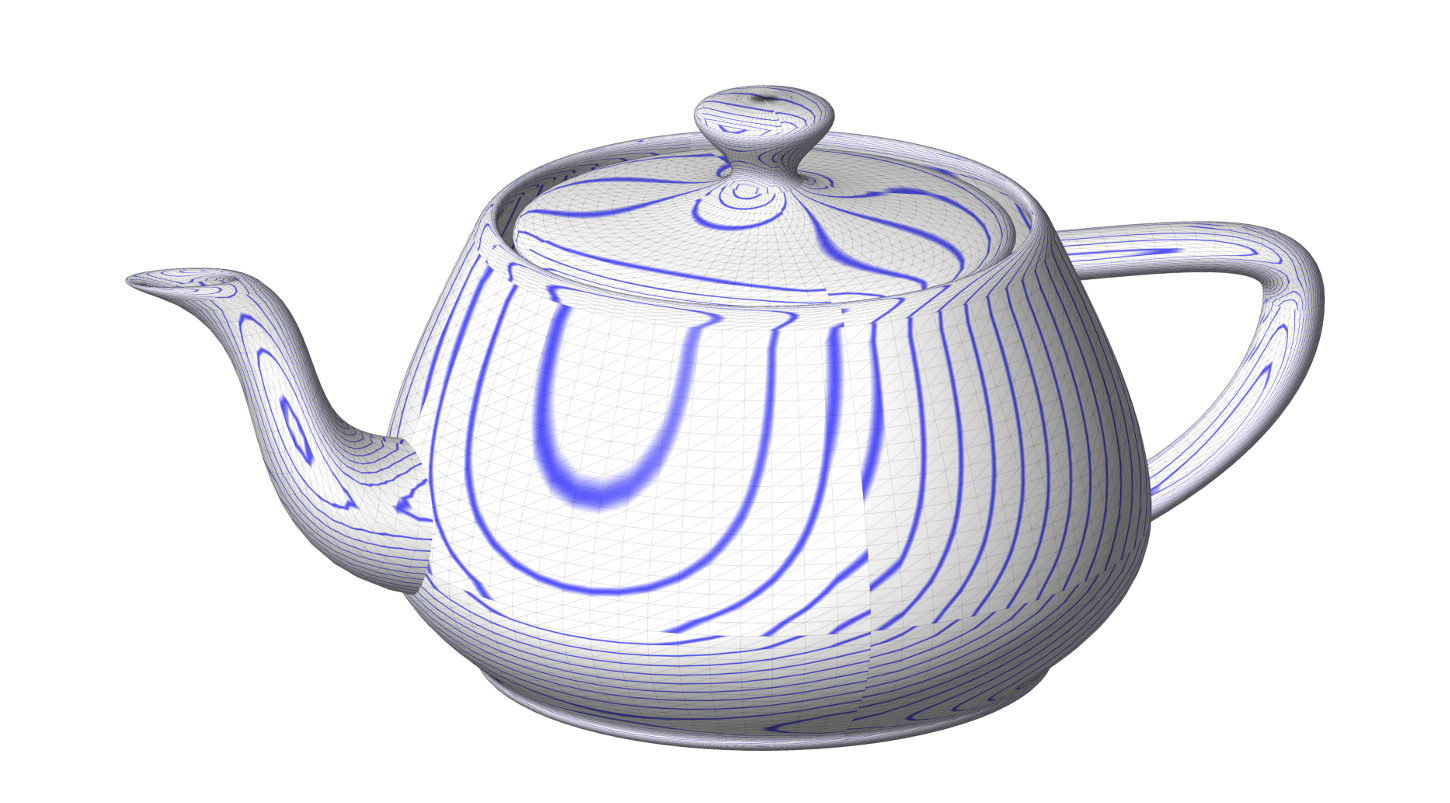TP6 : Bézier Surfaces
Code
Do
git pull
or, if you don’t have the local repo,
git clone https://github.com/bbrrck/geo-num-2016.git
As usual, test by
cd TP6/
mkdir build
cd build
cmake ..
make
Today, we start working with surfaces, which means the transition from 2D to 3D.
We will use OpenGL for rendering, but don’t worry if you have little or no experience with OpenGL;
a wrapper class SimpleViewer is provided. To render a patch, just call
viewer.add_patch(X,Y,Z);
Calling this method repeatedly means adding new patches while keeping the existing ones. Like this, you can render multiple patches at once (i.e. render piecewise Bézier surfaces).
You can also play with settings to set face/edge color:
viewer.set_facecolor( 255, 163, 0 ); // [255,163, 0] = sort of orange
viewer.set_edgecolor( 55, 55, 55 ); // [ 55, 55, 55] = gray
The first build will take a bit longer than usual as there are some new libraries:
GLM,
GLFW
and
GLEW;
these are all required by the SimpleViewer.
To test the viewer, try running
./geonum_TP6 simple
If everything goes well, you should see a cube. The viewer can be controlled with the mouse: click and drag to rotate, scroll to zoom (also works with pageup/pagedown keys).
Note:
If you experience problems compiling the program with all the new libraries, there is an alternative way: use the cmake/CMakeLists2.txt file
(copy its contents to ./CMakeLists.txt). In this case, don’t forget to remove/comment #include <SimpleViewer.h>. You can then export your patches via the writePatch(...) function and render them using matplotlib.
Tensor product Bézier surfaces
Tensor product Bézier surfaces are a direct generalization of Bézier curves. Instead of a control polygon $\mathbf b_i$, we consider a control net $\mathbf b_{ij}$. A Bézier surface is the described as
\[S(u,v) = \sum_{i=0}^{m} \sum_{j=0}^{n} \mathbf b_{ij} B_{i}^{m}(u) B_{j}^{n}(v)\]where $m,n$ are degrees in $u,v$, respectively; $B_{l}^{k}$ are Bernstein polynomials.
Evaluation
To evaluate a point $S(u,v)$ on a surface, let’s fix $j$ and vary $i$.
\begin{equation} \displaystyle B(u,v) = \sum_{j=0}^{n} B_{j}^{n}(v) \underset{= \mathbf b_{j}(u) } { \underbrace{ \left[ \sum_{i=0}^{m} \mathbf b_{ij} B_{i}^{m}(u) \right] } } \end{equation}
The $\mathbf b_{j}(u)$ defines a Bézier curve in $u$ and can be evaluated using the De Casteljau.
\begin{equation} \displaystyle B(u,v) = \sum_{j=0}^{n} \mathbf b_{j}(u)B_{j}^{n}(v) \label{final} \end{equation}
This equation defines a Bézier curve in $v$ with control points $\mathbf b_{j}(u)$ depending on $u$. At the end of the day, we have
- $n+1$ evaluations of the De Casteljau for the degree $m$;
- $1$ evaluation of the De Casteljau for the degree $n$.
Alternatively, we can fix $i$ and vary $j$.
Bézier patch evaluation scheme. (image by Pierre-Luc Manteaux)
Coordinate matrices
In the code, the control points $\mathbf b_{ij}$ are actually stored in three coordinate matrices $\texttt{nX}, \texttt{nY}, \texttt{nZ} \; $ so that
\[\mathbf b_{ij}^x = \texttt{nX(i,j)}, \qquad \mathbf b_{ij}^y = \texttt{nY(i,j)}, \qquad \mathbf b_{ij}^z = \texttt{nZ(i,j)}.\]This means the code is more comprehensible as the structure of the matrices directly represents the grid topology of the patch. On the other hand, it also means the computation needs to be done for each coordinate individually.
Bézier surface vs. piecewise Bézier surface
In practice, a Bézier surface often consists of multiple surface patches, each having its own control polygon. Therefore, it is sometimes called a piecewise Bézier surface.
Some surfaces in the data/ folder consist of more than one patch, ranging from 2 (heart) to 128 (gumbo).
They are saved in the BPT format; some datafiles are taken from the website of Ryan Holmes where you’ll also find more details about this format.


The discontinuity in isophotes shows the piecewise Bézier Utah teapot is not $\mathcal C^1$.
ToDo
- Implement the evaluation of Bézier surfaces for $(u,v) \in [0,1]^2$. For the first tests, use
simpleandsimple2(as these contain only one patch). - When you’re sure the implementation works for the simple cases, test your algorithm on datasets with multiple patches:
heart(2),sphere(8),teapot(32) andgumby(128). Don’t set thenum_samplesparameter too high, always start with smaller values (e.g. 5 or 10).
Resources
- the website of Ryan Holmes with Bézier surfaces as BPT files
- Bézier surfaces on wikipedia
- construction and properties of Bézier surfaces by prof. Ching-Kuang Shene